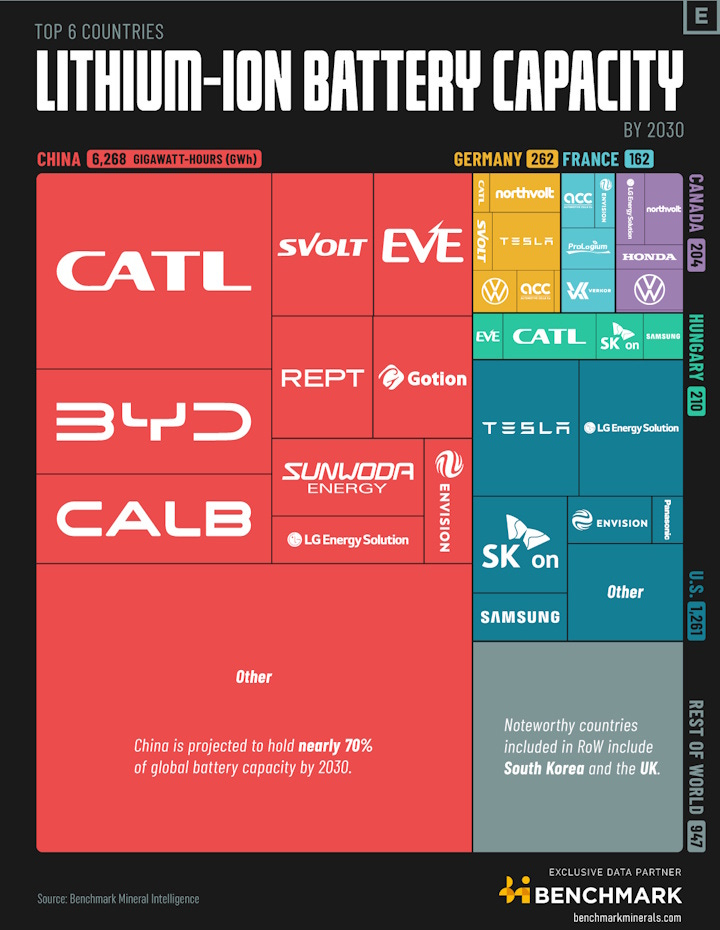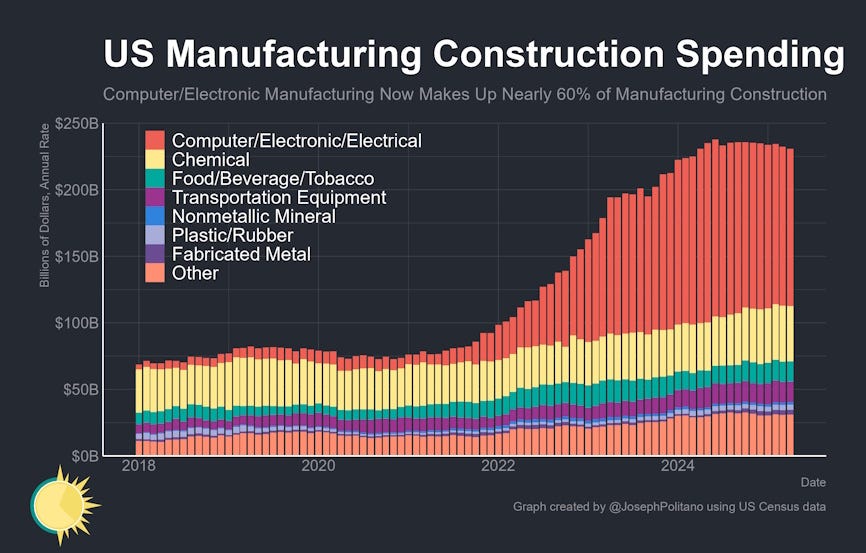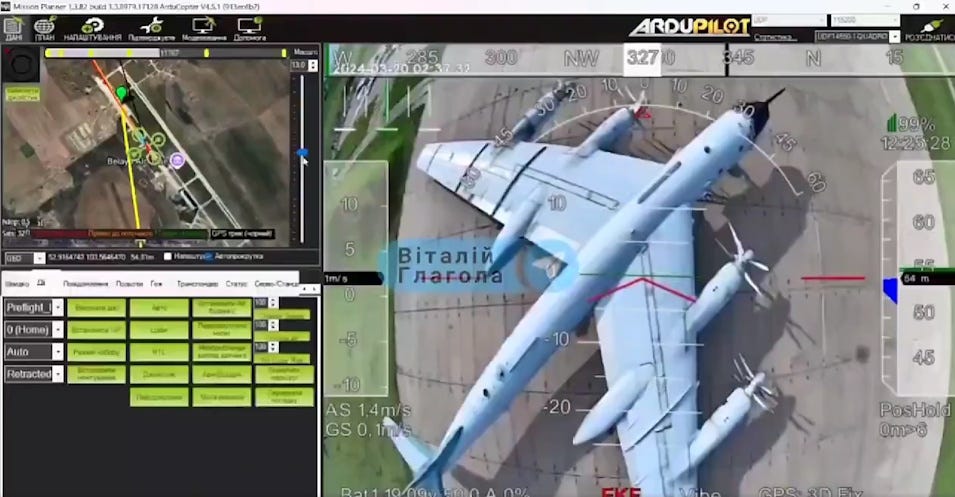How Chinese drones could defeat America
A Ukrainian drone attack shows our extreme vulnerability.
Let me tell you a story about World War 2. In 1940, before the entry of the U.S. and the USSR into the war, Britain was fighting alone against Germany and Italy. Despite being massively outnumbered and outgunned, the British managed to pull off a spectacular naval victory, using innovative new technology. They sent the HMS Illustrious, an aircraft carrier, to attack the Italian fleet in its harbor at Taranto. The British aircraft disabled three Italian battleships and several other ships, without the Italian navy even seeing their opponents’ ships, much less having a chance to fight back.
But that’s just the prelude to my story, which is not about a British victory, but a British defeat. Just a little over a year after the Battle of Taranto, Winston Churchill sent the battleship HMS Prince of Wales and the battlecruiser HMS Repulse to deter Japan from attacking Singapore. Despite their own crushing victory at Taranto, the British military leadership was skeptical that battleships moving under their own power at sea could be taken down by air attack alone. They placed their faith in the power of zigzag movement and anti-aircraft guns to deter attacking planes.
This was foolish. Japanese torpedo bombers found and sank the Prince of Wales and the Repulse quite easily. Here is an aerial photo of the British warships, taken from the cockpit of a Japanese plane, desperately trying to evade their doom:
The great battleships — the invincible masters of the sea in previous wars — were suddenly helpless against the swarm of tiny aircraft. Churchill reacted with shock and horror, and the British fleet withdrew, essentially leaving Southeast Asia to the Japanese.
The world had changed, almost overnight. Air power had brought about a revolution in military affairs. Ironclad battleships went from the single most valuable piece of military hardware to being almost obsolete overnight. Yet people who had invested their countries’ treasure in battleship fleets, like Churchill, were painfully slow to realize the shift — even when it was their own technological innovations that rendered their old weapons useless.1
OK, so there’s your old WW2 parable, with a clear moral to the story: Don’t ignore technological revolutions. Now fast-forward to 2025. We may just have witnessed something akin to a modern Battle of Taranto. For years, Russia has used its strategic bombers — which can also carry nuclear weapons — to launch cruise missiles at Ukraine from a huge distance. The Ukrainians had attacked these bombers on the ground with drones, but the Russians simply moved them farther away, well out of reach of anything the Ukrainians could launch from their own territory.
So the Ukrainians got sneaky. They packed a bunch of drones — little plastic battery-powered quadcopters, not too different from a toy you would fly at the park — into trucks and (somehow) sent the trucks all the way across Russia. When the trucks got close to the air force bases where the Russians had parked their bombers, the Ukrainian drones popped out of the trucks and started blowing up the bombers — and other planes — on the ground. You can see the footage of the attack here:
And you can see some pictures of the drones used in the attack here:
It’s not clear how many Russian bombers the Ukrainians managed to take out, but everyone agrees it was a significant chunk of Russia’s bomber force. And these magnificent, enormously expensive, rare, highly prized machines of destruction were taken out battery-powered toys.
Again, the world has changed, almost overnight.
The American military is much better than the Russian military, but it’s ultimately not that different — it’s built around a bunch of big, expensive, heavy “platforms” like aircraft carriers, jet planes, and tanks. Each F-22 stealth fighter, still widely considered the best plane in the sky, cost about $350 million to build. A Ford-class aircraft carrier costs about $13 billion each. An M1A1 Abrams tank costs more than $4 million, and so on.
That’s the amount of value that will be destroyed every time a cheap plastic battery-powered Chinese drone takes out an expensive piece of American hardware in a war over Taiwan, or the South China Sea, or Xi Jinping waking up in a bad mood — not including, of course, the lives of whatever Americans happen to be inside the hardware when it gets destroyed. Except the true value lost will be much higher, since — like Japan in World War 2, or Russia now — the U.S. now has extremely limited defense manufacturing capacity, and thus won’t be able to easily replace what it loses.
As you read this, military planners all over the world are scrambling to come up with defenses against the kind of raid that Ukraine just carried out. Dozens of container ships arrive in American ports from China every day, each with thousands of containers. The containers on the ships then get unloaded and sent by road and rail to destinations all over the country. Imagine a hundred of those containers suddenly blossoming into swarms of drones, taking out huge chunks of America’s multi-trillion-dollar air force and navy in a few minutes.
That’s obviously a terrifying thought. How can the U.S. defend against that sort of attack? Possible countermeasures include hardened aircraft shelters and various forms of air defenses — guns, jammers, electromagnetic pulses, laser cannons, drone interceptors — along with improved surveillance of incoming container traffic. But whatever the eventual defenses are, the advent of cheap battery-powered drones has changed the game and made essentially the entire world into a battlefield.
The other question we need to be asking is: Why can’t the U.S. just do the same thing to China, in the event of a war? We have drones, right? Weren’t we the inventors of drone technology? Don’t we have innovative startups like Anduril, and Skydio, and lots of others racing to arm our military with the world’s best drones?
Well, OK. The U.S. did invent drone technology. But most of what we currently use are lumbering, expensive systems like the MQ-9 Reaper:
Each one of these giant drone planes costs $33 million. During the recent U.S. conflict with the Houthis — a conflict in which the U.S. was essentially defeated — the ragtag Yemeni militia shot down at least 7 of these Reaper drones, and possibly as many as 20. America in total has only a few hundred.
The kind of drones used in the Ukrainian raid, on the other hand, are “FPV” drones — that stands for “first person view”. These are small battery-powered plastic copters equipped with explosives. There are many types, but here’s one example:

These drones cost from a few hundred to a few thousand dollars each, depending on the type. Ukraine is currently producing thousands of these drones per day, and says it expects to be able to produce over 10,000, although either the base drone (before weapons and other military hardware are added) or the parts used to make the drone typically come from China.
Why so many? FPV drones aren’t just useful for the kind of long-range surprise attack that Ukraine just carried out. In fact, they’re steadily replacing every other type of weapon on the battlefield. FPV drones can take out tanks, including America’s best tanks. They are now estimated to cause 70% of the casualties on the battlefield — more than artillery, the traditional “god of war”. Here are some excerpts from a Bloomberg explainer:
Tens of thousands of the relatively cheap and expendable machines are now buzzing back and forth over the front lines, pinpointing Russian positions, gathering intelligence to anticipate impending assaults, colliding with enemy targets or dropping bombs on them.
By early 2025, drones were accounting for 60% to 70% of the damage and destruction caused to Russian equipment in the war, according to UK-based think tank the Royal United Services Institute…
Military commanders around the world are taking note. Taiwan is investing in mass-produced drones in anticipation of a possible conflict with China. Israel has recalibrated the Iron Dome air defense system in the war in Gaza to account for maneuverable drones — one of its biggest blind spots. European governments embarking on their largest rearmament since the Cold War have identified drones and counter-drone systems as an investment priority. The US Pentagon, which pioneered sophisticated and expensive drones sourced from big arms contractors, is looking to buy cheaper ones designed by startups and deployed en masse…
Small, light drones with multiple rotors have become the defining innovation of the war. Known as first-person view drones, they are typically controlled in real time via a video feed by an operator who can “see” through an onboard camera using electronic goggles so they can fly beyond the line of sight. Social media is full of videos showing the machines closing in on troops, armored personnel carriers, missile batteries and command posts until the moment of impact, when the picture turns to static…Other rotor drones are used to drop grenade-sized explosives on targets and can be reused if they make it back safely.
Bloomberg says that the parts used to make Ukraine’s drone fleet are bought “online”, but that is a euphemism. They are made in China.
An FPV drone is basically:
some injection-molded plastic parts
some trailing edge computer chips (microcontrollers, sensors, etc.)
an electric motor made of rare earth permanent magnets
a lithium-ion battery
The U.S. can still make plenty of trailing-edge computer chips, but the rest of these items are all China, China, China.
China does a large fraction of the injection molding in the world — about 82%, according to one 2024 estimate.2 Currently, I know of no government plan to restore America’s lost capacity in injection molding. In fact, Trump’s tariffs — if they ever go into effect — are expected to severely damage the U.S. injection molding industry, by cutting American injection molding companies off from imports of the specialized equipment they need.
China also makes most of the electric motors in the world. This is because China makes most of the magnets, and an electric motor is basically just made out of magnets. The rest of the world is scrambling to add magnet production capacity, but for the rest of this decade, China will dominate:

But this will be hard to accomplish. The magnets for electric motors are made out of materials called “rare earths”, which are almost entirely mined and processed in China.

In fact, China recently slapped export controls on its sales of rare earths to the U.S., causing chaos in a number of U.S. industries, and probably contributing to Trump’s decision to pause his tariffs. So far, U.S. efforts to mine and refine rare earths have fallen short (which itself is a topic for another full post).
Finally, and most importantly, we have batteries. A battery is the essential component of an FPV drone — it holds the energy that makes the thing go. Larger drones can use combustion engines, but to get something as small and cheap as an FPV drone, you need a battery.3
China makes most of the batteries in the world. In 2022 it had 77% of global manufacturing capacity. Here’s a projection out to 2030:

Even this projection, which shows America catching up just a little bit, is probably way too rosy. It was made at a time when Joe Biden’s industrial policy — specifically, the Inflation Reduction Act — was dishing out huge subsidies for American battery factories. Here’s what that looked like:

This wouldn’t have put American battery-making capacity on par with China, but it would have given us a fighting chance.
Now, though, Donald Trump and the Republicans are canceling the policies that were promoting American battery manufacturing:
A tax and policy bill passed by House Republicans…would gut subsidies for battery manufacturing, incentives for purchases of electric vehicles by individuals and businesses, and money for charging stations that Congress passed during the Biden administration. And it would impose a new annual fee on owners of electric cars and trucks.
Electric vehicles are crucial for battery manufacturing capacity, because in peacetime, they’re the main source of demand for batteries. Pump up the EV industry, and you pump up the battery industry too — just as the chart above shows Biden doing. Kill the EV industry and you kill the battery industry too, just as Republicans now want to do. Harming the solar industry will also harm the battery industry, because some types of batteries are used to store solar energy for when the sun isn’t shining.
GOP policies are already mauling the American battery industry:
[M]ore [battery] projects were canceled in the first quarter of 2025 than in the previous two years combined. Those cancellations include a $1 billion factory in Georgia that would have made thermal barriers for batteries and a $1.2 billion lithium-ion battery factory in Arizona…“It’s hard at the moment to be a manufacturer in the U.S. given uncertainties on tariffs, tax credits and regulations,” said Tom Taylor, senior policy analyst at Atlas Public Policy. Hundreds of millions of dollars in additional investments appear to be stalled, he added, but haven’t been formally canceled yet.
In fact, the whole boom in American factory construction that happened under Biden appears to be halting and going into reverse under Trump, thanks to a combination of tariffs and the expected cancellation of industrial policies:

The Ukrainian attack on Russia’s nuclear bombers shows how insane and self-defeating the GOP’s attack on the battery industry is. Batteries were what powered the Ukrainian drones that destroyed the pride of Russia’s air fleet; if the U.S. refuses to make batteries, it will be unable to make similar drones in case of a war against China. Bereft of battery-powered FPV drones, America would be at a severe disadvantage in the new kind of war that Ukraine and Russia have pioneered.
Unfortunately, Trump and the GOP have decided to think of batteries as a culture-war issue instead of one of national security. They think they’re attacking hippie-dippy green energy, sticking it to the socialist environmentalist kids and standing up for good old red-blooded American oil and gas. Instead, what they’re actually doing is unilaterally disarming America’s future drone force and ceding the key weapon of the modern battlefield to China.
In any case, unless America’s leaders wake up very quickly to the military importance of batteries, magnets, injection molding, and drones themselves, the U.S. may end up looking like the British Navy in 1941 — or the Italian Navy in 1940. A revolution in military affairs is in process, and America is willfully missing the boat.
Ironically, Japan made a similar mistake, directing far too many of its scarce resources toward battleship production instead of aircraft carriers.
Actually, estimates for this number are all over the place. Some are lower.
Incidentally, this is why everyone who confidently tells you that batteries can’t replace fossil fuels because they have “lower energy density” doesn’t know what they’re talking about. Yes, if you measure just the gasoline or kerosene or diesel in a combustion engine, its energy density is higher than that of any battery. But open up a car hood, and you’ll see a huge array of heavy, bulky tanks and tubes and machinery — that’s the engine required for turning gasoline into kinetic energy. Batteries don’t need an engine to covert their energy into kinetic energy — they just need some magnets. This means that the true energy density of batteries, counting the extraction machinery, compares pretty favorably with combustion engines in many applications.






You make a lot of good points, Noah, but you're again selling Europe - and particularly Ukraine - short.
Ukraine has started moving drone production onshore. Not just final assembly, also components.
See for example here: https://www.forbes.com/sites/davidhambling/2025/04/08/ukraine-is-making-fpv-drones-without-chinese-parts-and-at-lower-cost/
European economies have retained capacities in injection molding and other critical industries - and they are ramping up battery and magnet production.
Rare earths are one significant vulnerability, but that's not surprising, as Europe generally tends to depend on other parts of the work for raw materials (but there's Canada, Australia, New Zealand, South America and the US who could step up there).
Yes, China dominates in scale, no question. But your single focus on US capabilities and shortcomings, while important, often misses the developments and capabilities in other parts of world.
Europe is much better placed for mass drone manufacturing than people realize. And Ukraine is the best example.
Attack drones used by both sides of the war A are built on carbon fibre frames, not injection mould plastic.
That does not change the basic argument of the article, but it is an important difference.